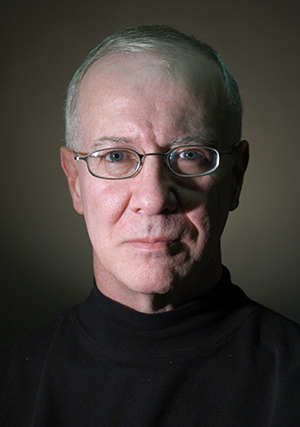From the Booking Desk:
Richard Ryan has been a fan and supporter of BOLO Books for a number of years now. He often reaches out to tell me how much he enjoyed a review or a recommendation from the blog. I have covered his series of Sherlock Holmes pastiches here on the blog on a number of occasions and encourage you all to check them out if you haven’t already. It was only a matter of time before Richard appeared as a Composite Sketch profile subject and today is that day. I think you all will enjoy his thoughtful responses to our weekly questions.

Name: Richard T. Ryan
Location: Staten Island, New York
This person from my personal life is such an inspiration:
Without a doubt, I would have to say my wife, Grace. She has supported and encouraged my writing throughout our marriage. She is also a brutally honest critic, but although we sometimes disagree, she turns out to be right far more often than I do. I am computer illiterate, so she has also proven invaluable in retrieving lost work and in other instances too numerous to count. In short, I’d be lost without her. I also have serious doubts as to whether I would have finished any of my books without her insights and assistance.
One of the people I admire most in the crime fiction community is:
Lee Child. I say this because he has created a true one-of-a-kind character in Jack Reacher, and he has written several of the finest stories I have ever read. I am particularly fond of Tripwire, which contains, in my opinion, one of the great villains of all time. On a more personal level, Lee was kind enough to endorse my first novel, The Vatican Cameos, and you can see him regularly trying to give struggling writers a lift.
STALKER ALERT! If this fictional character were real, they would likely need to get a restraining order against me:
This is so difficult for me to answer because there are a number of authors whose works I wait anxiously for each year. Among those who can count me as loyal fans are Stephen Hunter, Daniel Silva, Lee Child, Ben Coes and Vince Flynn. That said, I suppose I’d have to pick Gabriel Allon, Silva’s art restorer cum secret agent. Art has played a key role in all of my works, and the idea of discussing Renaissance art with Allon would be too tempting to pass up.
People are always surprised that I am a fan of this individual (singer, actor, or artist):
I have eclectic tastes in music; as a result, I can listen to both Pachelbel and Chuck Berry. However, the artist that has always impressed me is the Canadian folksinger, Gordon Lightfoot. So many of his songs – “The Wreck of the Edmund Fitzgerald,” “10 Degrees and Getting Colder,” “If You Could Read my Mind” – strike me as short stories set to music. He is, I think, a modern-day troubadour, in the truest sense of the word.
My personal catch phrase is (or should be):
“Life isn’t fair. It’s just fairer than death that’s all.” Fans will know that line comes from William Goldman’s The Princess Bride. I actually incorporated the work into my curriculum in my past life as a high school English teacher. Taking that as a jumping off point, it can be applied to so many great pieces of literature. It’s a truism, but it is one that I think we need to be reminded of occasionally.


That’s a great quote. But I still maintain that this is one rare case where the movie is better than the book.
I actually think there are a few examples of movies that are better than the books. The first one that comes to mind is JOY LUCK CLUB. I thought the movie was much more enjoyable than the book. That said, I think THE PRINCESS BRIDE novel is about as perfect as you can get – but I do love the movie as well. Keep in mind, I read the book many, many years before the movie was even a glimmer is the eye of producers (which I assume was the case with Rich as well) so that has a lot to do with it.
And I came to the movie first and then read the book. I found the asides distracting and much more “look at me, aren’t I clever” than actually clever and fun.
Having said that, I did love Humperdink’s proposal to Buttercup in the book.
I stumbled across The Princess Bride in the ‘70s and I used to make my students send away for the reunion scene for extra credit
That ability to send away for an extra scene was just another of the inventive aspects of the novel. I eventually tracked down a copy of THE SILENT GONDOLIERS, “S. Morgenstern’s” only other writing, but it failed to live up to THE PRINCESS BRIDE.